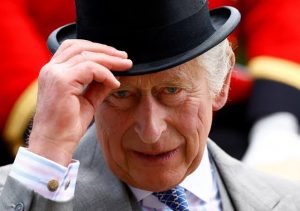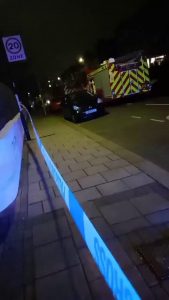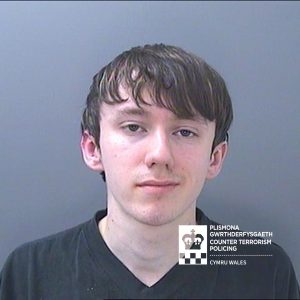Following the passing of Queen Elizabeth II, who had been the monarch of Britain for the longest period of time, specifics of the schedule of ceremonial events are starting to emerge.
Here is what we anticipate taking place in the next days, including the Queen’s coffin’s travel from Scotland, her lying in state the following week, and her state funeral on Monday, September 19.
Also read: Queen Elizabeth II’s funeral on September 19 post 4 days of lying in state
Scottish journey
On Sunday at 10:00BST, the Queen’s coffin will leave Balmoral Estate for the Palace of Holyroodhouse in Edinburgh, the British monarch’s official residence in Scotland. The Throne Room will serve as its resting place until Monday afternoon.
At 14:35BST, the casket will be carried in procession by the King and other members of the Royal Family to St Giles’ Cathedral, where a liturgy will be performed. The public will be able to view the Queen’s casket when she rests in the cathedral for a full day on Monday through Tuesday.
Also read: King Charles proclaimed king: Who are next in line?
At 14:00 BST, the casket will leave the cathedral to be flown from Edinburgh back to London in preparation for the lying in state. The Queen’s body will be accompanied by Princess Anne, according to Buckingham Palace.
Lying in state
Before her funeral on Monday, September 19, the Queen will lay in state in Westminster Hall for four full days, allowing members of the public to pass by and pay their respects.
The Palace of Westminster, the centre of British administration, houses its oldest section, known as the grand hall.
More than 200,000 people lined up to see the coffin of the Queen Mother, the last member of the Royal Family to lie in state in the hall, in 2002.
The Queen’s casket will lie atop a catafalque, an elevated platform, beneath the hall’s 11th-century timber roof. Soldiers from the Royal Household’s service units will be stationed at each corner of the platform to provide security.
Also read: Queen Elizabeth II death: Who’s who now in the Royal Family
A military parade and members of the Royal Family will accompany her in a slow procession from Buckingham Palace to Westminster Hall on Wednesday, September 14.
Additionally, spectators will be able to view the procession as it moves through the streets, and large screens presumably will be placed up in London’s Royal Parks to stream the spectacle.
Once in Westminster Hall, her casket will be topped with the Imperial State Crown, orb, and sceptre. It will be covered in the Royal Standard.
The casket is anticipated to arrive at 15:00 BST, and after being positioned in the chapel, a brief service will be held with participation from the King and other Royal Family members. The public will then be able to enter.
Also read: What is the Accession Council?
Information about how to view the coffin will shortly be made available.
The funeral
On September 19 at 11:00 BST, Westminster Abbey will host the state burial for the Queen. In the UK, the day has been designated a bank holiday.
The Queen was crowned as monarch of Britain in 1953, and she wed Prince Philip there in 1947. The Abbey is a revered historical church.
Although the Queen’s mother’s funeral was held there in 2002, there hasn’t been a royal funeral service in the Abbey since the 18th century.
International heads of state will fly in to join members of the Royal Family in remembering the Queen’s life and service. There will also be prominent British lawmakers and previous prime leaders.
Also read: Camilla’s designation, Queen Consort: What does it mean, and how did she get it?
The day will start as the State Gun Carriage of the Royal Navy transports the Queen’s body from Westminster Hall to Westminster Abbey.
The last time 142 Royal Navy men were seen pulling the gun carriage was in 1979 at the burial of Lord Mountbatten, Prince Philip’s uncle.
The new King and other senior members of the Royal Family are likely to follow in procession.
David Hoyle, the Dean of Westminster, will likely preside over the ceremony, and Justin Welby, the Archbishop of Canterbury, will deliver the sermon. Liz Truss, the prime minister, might be asked to read a lesson.
Inside Westminster Abbey
The Queen’s coffin will be carried in a walking procession from the abbey to Wellington Arch at London’s Hyde Park Corner after the funeral service before being transported by hearse to Windsor.
Also read: Who is Camilla, Queen Consort of England?
That afternoon, the Queen’s casket will make its last trip to Windsor Castle’s St. George’s Chapel.
Prior to the coffin entering St. George’s Chapel for a committal service, the King and senior members of the Royal Family are anticipated to join the procession in Windsor Castle’s Quadrangle.
The Royal Family frequently chooses St. George’s Chapel as the location for weddings, christenings, and funerals. The Queen’s late husband Prince Philip’s funeral was held there, as well as the wedding of the Duke and Duchess of Sussex, Prince Harry and Meghan.
Inside St. George’s Chapel
Before being buried in the King George VI memorial chapel, which is housed inside St. George’s Chapel, the Queen’s casket will be lowered into the Royal Vault.







